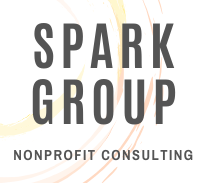Office Re-Entry and Conflict Drivers
A few years back, I wrote a blog entitled, Four Types of Conflict that Arise with Stakeholders and How to Avoid Them, the most viewed content on our website. People still view this blog almost 10X more than any other content.
What this tells me is that nonprofit leaders are searching for tools to resolve conflict. In the piece I’ve linked above for you, I focus on four conflict drivers, Interest-Based, Cognitive, Emotional, and Structural, and offer tools for resolution. Today I want to apply that information to our current reality.
I first learned about this lens for conflict resolution from the Program for the Advancement of Research on Conflict and Collaboration at Syracuse University’s Maxwell School. It was formative in how I view and approach conflict today.
Many of us are heading back to the office, and it is good to prepare for conflicts that may arise.
Interest-Based Conflict:
Interest-based conflicts arise from competing interests. “I want something, and you want it as well.” An example of interest-based conflict and the sector’s return to work might be the following:
Your team wants to work from home indefinitely, but your board wants the staff to return to the office.
Tools for the resolution of interest-based conflict include compromise, bargaining, and win-win solutions. In the example above, you might want to solicit more information on why each party developed that position to determine if there is a possible compromise. For instance, maybe you decide staff should return to the office, but you update your work from home policy to include increased flexibility.
Cognitive Conflict:
Cognitive conflicts stem from differing beliefs. “I believe X, and you believe Y.” An example of cognitive conflict includes:
Your staff feels frustrated by the return to work plans and how they make family life—which is already hard in a pandemic—harder.
Tools for the resolution of cognitive conflict involve facilitated conversations, intentional dialogue, and problem-solving workshops. Regarding the above example, essentially, the staff believe the new policies are inappropriate, and you believe they are effective. Therefore, it is helpful to set up meetings, preferably one-on-one, and intently listen to these concerns. Then, try to find ways to address problems with policy updates to signify to your team that you received the message.
Emotional Conflict:
Emotional conflicts stem from feelings like fear, grief, or embarrassment. Below is an example of how emotional conflict affects teams today:
Your staff members are afraid to return to the office because they fear contracting COVID.
Tools for the resolution of emotional conflict include truth-telling, public acknowledgment, and offering forgiveness. In the above scenario, it is wise to listen to staff concerns, acknowledge their fears, and then set in place policies like mask and vaccine mandates to put concerns at ease.
Structural Conflict:
Structural conflicts derive from the inequities of structures and systems. An example of how this plays out in 2021 is listed below:
The sector is talking more openly about diversity, equity, and inclusion injustices than they were in 2019, and now your staff wants to see changes.
Some tools for resolving structural conflicts include redistribution, revolution, and deconstruction: Structural conflicts are significant in scale and importance. Solicit feedback on the changes that need to be made from your staff’s perspectives and take them seriously, instituting the necessary changes.
It is important to remember that conflict is inevitable, and therefore having the right tools and resources to manage conflict effectively sets you up for success as a leader. There is no amount of avoiding conflict that helps resolve issues in the long run, and in fact, handling conflict well instills trust and confidence with your team and stakeholders.
Contact Spark Group Consulting today for a free- 30-minute chat for more information on handling organizational conflict.
⭐ Join our weekly newsletter where we share tons of exclusive tips, tools, grant opportunities, and resources to our subscribers. Subscribe on the Spark Group home page.




